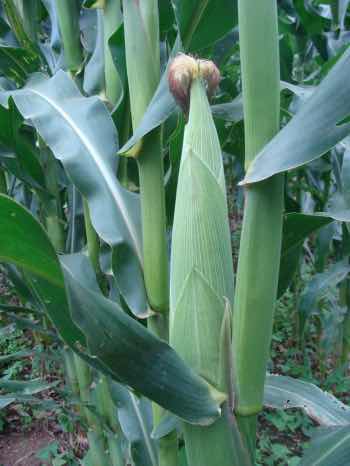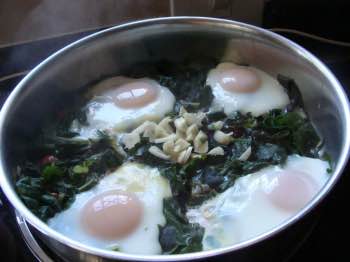Zeaxanthin macular degeneration
Zeaxanthin macular degeneration is an important subject for every single human being; a deficiency is the most common cause of age-related blindness after 55; five million Americans and many more are only partially sighted.

This page was last updated by Dr Barrie Lewis on 9th February, 2023.
We need to add that scientists remain divided on the topic; but because of the severity of AMD and the simplicity of increasing these carotenes in the diet, it makes sense to be on the safe side.
Zeaxanthin works with another carotenoid called lutein; they are isomers with the same chemical structure. Together they are found in very high concentrations in the macula of the eye where fine discrimination and colour are detected.
Studies at the Linus Pauling Institute have shown that a diet rich in carotenes helps prevent cardiovascular disease and some tumours but taken in capsules it has little value; it probably applies in general to most supplements but there appear to be some exceptions.
In short enjoying foods high in zeaxanthin and lutein makes more sense than getting it from a bottle; a lot cheaper too.
Zeaxanthin is not an uncommon carotenoid. It is found in many vegetables and fruit; it gives them their characteristic yellow or reddish colour.
The name is given to this xanthophyll from the botanical name for corn, namely Zea mays.
Hence it is known as mais in Dutch and maize in English.
So it is found in corn, citrus and many greens such as spinach, kale and lettuce; but in much smaller quantities in iceberg. Carrots, broccoli and young beans are also good sources of zeaxanthin.
Carotenoids are better absorbed in the presence of fat, so enjoying your corn with butter and your green salad with olive oil makes good sense.
Folk enjoying a varied diet with many coloured foods need have no worries about zeaxanthin macular degeneration; if you are still on meat and potatoes only then there are serious concerns, particularly if you also smoke.
Cataracts
Together with lutein, zeaxanthin macular degeneration is also involved in the prevention of cataracts.
- Zea
- + xanthophyll
- becomes zeaxanthin.
Zeaxanthin macular degeneration
Zeaxanthin macular degeneration is all about the prevention of the most common cause of age-related blindness. A deficiency of these carotenoids in the diet leads directly to the use of the white cane; as always, prevention is better than a cure.
Oddly they are only of known importance in the cones of the eye; their concentration in other parts of the body is negligible. Their particular value is in absorbing high energy radiation entering the lens, particularly the blue and UV components that would damage the retina.
Phytochemicals are known as functional foods; they enhance health and help prevent disease. Some of them like the carotenoids lutein and zeaxanthin are well researched in relation to age-onset macular degeneration, but there are many thousands, and most of their specific roles are quite unknown; that's why those eating plenty of coloured dishes every day enjoy much greater wellness.
Certainly they have antioxidant properties, reducing inflammation and helping to prevent cancer; angry joints, muscles and blood vessels too.
Others like lignans, the isoflavonoids in seeds and whole grains researchers have found give protection against breast cancer for example; legumes too.
It's a colossal subject, fascinating for researchers but for us we simply must make sure we are enjoying a wide range of whole and especially coloured foods.
The food industry alas refines out most of these phytonutrients, rendering a typical supermarket diet dull and potentially dangerous to health; hence the phenominal use of chemical flavour enhancers in almost every dish.
It's important to enjoy them in as many different ways as possible. Generally raw foods would have more vitamin C for example; but it is interesting that the lycopene in tomatoes is released in far greater abundance if it is cooked in a small amount of fat.
Allicin is another important phytonutrient found most richly in garlic but the whole onion family in general. So, enjoying leek soup for example is one excellent and tasty way to get sufficient of this functional food.
A wonderful cocktail of these carotenoids is to be had in the Florentine breakfast; lightly fry half an onion, garlic and tomato in butter. Toss on a pile of spinach and other mixed greens like kale; when steamed through, plop a couple eggs on the vegetables. Enjoy on 100% wholemeal, buttered toast.
This delicious meal will contain allicin in the onion, lycopene in the tomato and zeaxanthin in the spinach; and omega-3 in the yolks, especially if they come from free range hens. The generous blob of butter promotes the absorption of these phytonutrients, as does the fat in the eggs.
Carotenoids
Carotenoids are the bright colours in pumpkins, tomatoes and spinach; and beets, for example. They are powerful antioxidants, mopping up the free radicals that damage our DNA; zeaxanthin macular degeneration is just one of many diseases.
Food
Orange peppers
Egg yolks
Yellow corn
Spinach
Kale
Citrus
Lettuce, cos
Parsley, cilantro
zeaxanthin
1.3
1.2 mg
0.8
0.3
0.4
0.1
0.1
0
Zea + lutein
1.5
3.0
1.5
30
26
2
3
Some of these figures are a bit of by guess and by God; different sites have wildly different statistics. Don't consider them absolute but rather as a rough guide. In short, kale, eggs and yellow maize are queens and kings of the eyes. If you enjoy them regularly you need have little fear of age-onset macular degeneration.
Eggs Florentine is a winner.
Eight colors eggs Florentine
Eight colors eggs Florentine combines many of the sources of lutein and zeaxanthin to give you great protection against macular degeneration. We have it every morning; toss in a few broad beans in season; and half a tomato to protect the prostate.
This photo incidentally was taken before we turned to free range cage free eggs; see how pale the yolks are? That means far less carotenes.
Researchers reporting in the British Journal of Ophthalmology report that egg yolks and corn are the richest sources of lutein and zeaxanthin[2]. In general they recommend many coloured fruits and vegetables.

- Zeaxanthin for Preventing Macular Degeneration @ American macular degeneration foundation.
- Avocado benefits
L-DOPA
L-DOPA is a phytochemical produced by certain plants such as the broad bean; it is used by the brain to synthesize dopamine, a vital neurotransmitter, a deficiency of which is known to cause Parkinson's disease. Will it supplement the effect of zeaxanthin in preventing Macular Degeneration?
Scientists reporting about L-DOPA and Age-related Macular Degeneration[1] in the American Journal of Medicine have found that patients taking the drug for Parkinson's disease get AMD a very significant 8 years later than the general population; at 79 instead of 71.
The "retinal pigment epithelium" is a layer that sustains the overlying visual cells.
This membrane has a receptor that responds to L-DOPA, stimulating the growth and nourishment of the rods and cones, the retinal visual cells.
Whilst it is known that the L-DOPA in broad beans will benefit those suffering from Parkinson's disease, it is not illogical to presume that they would also help in the prevention and even treatment of Macular Degeneration. I know of no research confirming this.
Chiropractic
Chiropractic was born out of the naturopathic movement; hence our interest in subjects like zeaxanthin macular degeneration; I have numerous elderly patients suffering from the disease.
We are now recommending the regular consumption of broad beans, along with dark green leafy vegetables, coloured fruits and vegetables; they are the best non-meat source of protein in any case; and omega-3 rich foods too.
When browsing these links use right click and "Open Link in New Tab", or you may get a bad gateway signal.
- Home
- Better health
- Zeaxanthin Macular Degeneration
Did you find this page useful? Then perhaps forward it to a suffering friend. Better still, Tweet or Face Book it.
